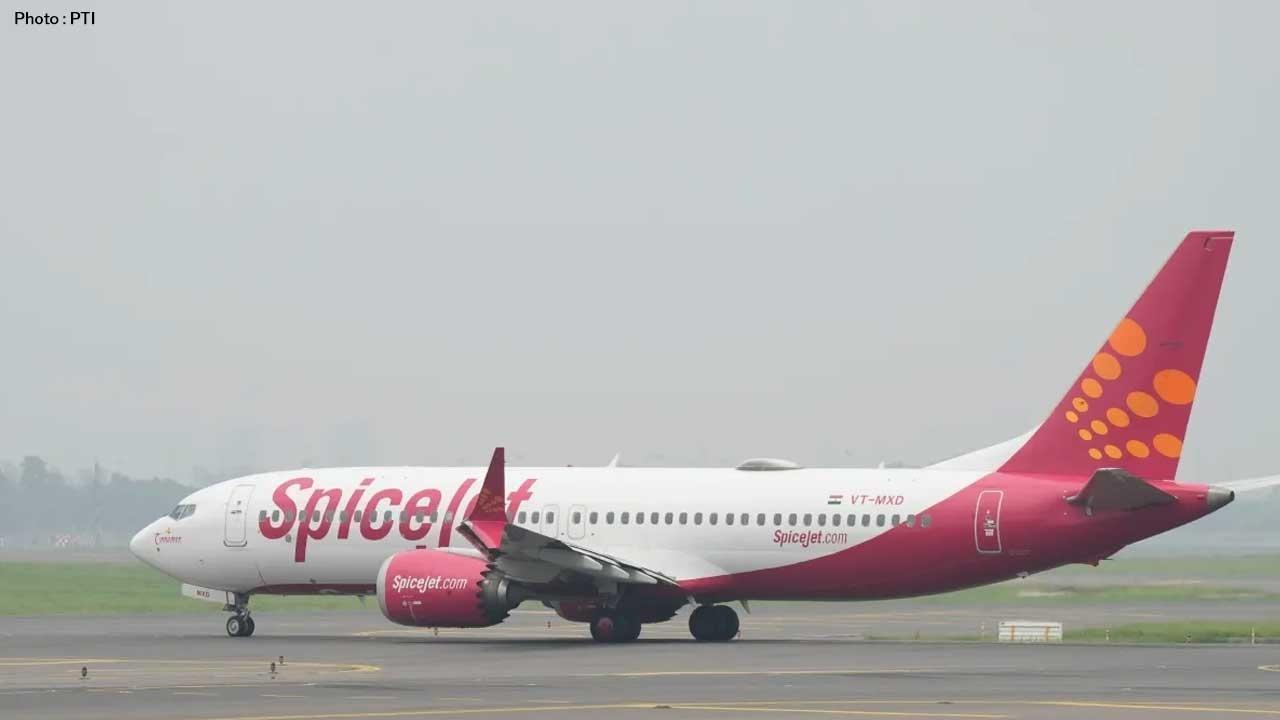
Join 10k+ people to get notified about new posts, news and tips.
Do not worry we don't spam!

Post by : Anis Farhan
When a global consumer electronics major decides to build new capacity in India, it’s not just a business move — it’s a signal. Panasonic Life Solutions India’s plan to set up a new white goods plant under India’s PLI scheme is one such signal: confident, strategic, and forward-looking.
White goods — such as air conditioners, LED lighting, refrigerators, washing machines — are essential consumer durables whose demand keeps growing in Indian households. For years, many such products were imported or assembled with limited local value addition. But India’s renewed push via PLI (Production-Linked Incentive) is trying to change that.
This article explores what Panasonic is doing, why it matters, what the new plant could look like, and what potential obstacles could lie ahead.
Here are the key points that have emerged from the reports so far:
Panasonic is exploring setting up a new manufacturing unit in India, which would allow the company to participate under the reopened window of the PLI scheme for white goods. The company has affirmed interest in leveraging this incentive to build capacity domestically.
The CEO of Panasonic Life Solutions India, Tadashi Chiba, has said the move is part of a larger strategy to shift certain operations from being “Japan-led” to “India-led,” meaning India will not just consume, but also manufacture and serve global or regional markets more directly.
Indian teams at Panasonic already provide global services; these are likely support functions, possibly R&D, service, or regional operations. The plan is to strengthen those roles alongside new manufacturing.
About half of Panasonic India’s revenue comes from its B2B verticals — industrial devices, supply chain solutions, building systems — not just consumer durables. India is among Panasonic’s faster-growing markets.
The government has recently reopened the PLI window for white goods, including for product categories such as air conditioners and LED lighting. The PLI scheme for white goods has a total budget (outlay) allocated over several years, to encourage investment, boost domestic manufacturing and generate employment.
Panasonic has not yet announced which specific product categories exactly under the white goods PLI (whether LED lights, ACs, washing machines, etc.) it will manufacture at the new plant.
Several factors make Panasonic’s decision logical and timely:
Strong Local Demand
India’s climate, rising incomes, increasing urbanization, rising housing, and cooling & lighting needs make white goods a high-growth segment. As more households move into middle & upper middle incomes, demand for air conditioners, refrigerators, etc., is expected to grow steeply.
Government Incentives via PLI
The PLI scheme offers financial incentives (usually based on incremental production/sales), helping offset investment risks, import duty costs, or supply chain challenges. It makes setting up a local plant financially more attractive than pure import or assembly.
Reducing Import Dependencies
Producing more locally helps reduce import costs, logistics delays, foreign exchange risk, tariff liabilities, and supply chain vulnerabilities. For global firms, having local manufacturing gives flexibility and better control.
Shifting Global Manufacturing Strategy
Many global electronics firms are looking to diversify production away from a single country (often China) due to tariffs, geopolitical risk, rising labor & input costs. India, with policy reforms, improving logistics, and large domestic market, is emerging as a major alternative.
Growth in B2B & Global Services
Since a large part of Panasonic’s business in India is B2B, having local manufacturing helps improve supply chain for its industrial components, building systems, etc. It reduces lead times, improves margins, and supports regional exports.
From what the company has stated and what the market expects, here are likely goals and outcomes Panasonic is targeting with the new plant:
Boost revenue growth: With increased local production, Panasonic can price more competitively, expand market share in white goods, and improve margin by avoiding import costs.
Localization & Value Addition: Increase content manufactured in India, possibly design, assembly, parts sourcing, etc., to deepen local manufacturing ecosystem.
Strengthen India as a Hub: Transition from being primarily a consumer of global products to becoming part of global supply chain. India could contribute not just manufacture but also service, design, R&D.
Employment & Skill Creation: Plant operations require trained labor, both in manufacturing, quality control, logistics, etc., generating jobs locally.
Capitalising on PLI Benefits: Financial incentives under PLI, when taken properly, reduce risk, improve return on investment, help firms amortize fixed costs better.
Export Opportunities: Surplus local capacity could serve neighbouring regions or exports, especially if product quality meets global standards, helping Panasonic earn from both domestic and export markets.
While Panasonic hasn’t confirmed which white goods it will manufacture at the new plant, some educated guesses can be made based on opportunity and existing strengths:
LED lighting is often an attractive category: lower input costs, simpler manufacturing in many cases, rising demand, possibility of high value addition with smart lighting or connected lighting.
Air conditioners are a likely bet given climate trends and increasing cooling demand in India. These have more complex components (compressors, electronics, heat exchangers), thus requiring larger investment but also offering higher margins.
Other “white goods” such as refrigerators, washing machines, or consumer electrical appliances could also be in consideration, especially those where Panasonic already has brand strength.
Also, given Panasonic’s mention of living space solutions & strong B2B business, product lines that integrate with building systems (e.g. HVAC components, industrial cooling, or integrated lighting) could be part of the strategy.
Setting up such a plant isn’t just about building structures and installing machines. Several challenges could influence success:
Capital Expenditure & Payback Period
Building a large white goods plant — especially for complex products — requires heavy investment in machinery, tooling, quality testing, skilled labor, supply chain. The payback period can be long, so Panasonic needs accurate demand forecasting and cost control.
Availability of Ancillary Ecosystem
Components suppliers, reliable power, good access to inputs (metals, electronics, compressors etc.), transport infrastructure, logistics all matter. If any link in supply chain is weak, costs or lead times escalate.
Quality & Skilling
To match global standards, issues like consistent quality, skilled labor, strict quality control, testing labs, safety compliance are essential. That requires investment in training, quality systems, R&D.
Competition & Pricing Pressure
There will be competition from existing manufacturers and imports. Competitors may undercut pricing, use cheaper labor, or exploit existing supply chains. Panasonic will need economies of scale or premium differentiation.
Regulatory & Policy Risk
Incentive schemes like PLI rely on government policies. Changes in tax, import duties, tariffs, or environmental regulation could affect viability. Panasonic must navigate regulatory clarity, compliance, and possible policy shifts.
Energy, Environment & Sustainability
Large plants consume significant power; managing energy cost, ensuring sustainable practices, waste management, environmental approvals are critical. Consumer and regulatory expectations increasingly demand green manufacturing.
Panasonic’s move is part of a larger industrial shift in India, with several implications:
Boost to Consumer Durables Sector: More manufacturing means higher supply, competitiveness, possibly lower prices for consumers. Businesses producing ancillary components, logistics, trade will benefit.
Manufacturing Job Growth: As companies invest in plants, job creation—both direct and indirect—rises. Skilled manpower, technicians, engineers, operators etc., will see demand.
Strengthening Make-in-India Vision: This aligns with India’s goal to become a global manufacturing hub, reduce import dependencies, build capabilities in durable electronics.
Export Potential & Global Supply Chains: If plants are scaled well, India could become a regional hub for white goods exports. This supports foreign exchange, strengthens industrial base, enhances technological know-how.
Competition among Cities / States: States that offer better incentives, land, power, labor will attract more manufacturing investment. We may see more states competing to become electronics/white goods manufacturing hubs.
To understand how this unfolds, here are key things to monitor:
Official Confirmation of site, investment size, manufacturing capacity, product categories. Which city/state will host the plant, how many units/year, what terms.
PLI Application & Approval Details: Panasonic will need to apply under the PLI scheme’s reopened window. Conditions such as minimum investment thresholds, production targets, local content requirements will matter.
State Government Support: Land acquisition, tax breaks, power supply, water, environment and labor permissions from state governments will be important.
Supply Chain Partnerships: Who Panasonic will partner with for components locally, or whether it imports critical parts. Local suppliers’ capacity will affect cost and timelines.
Technology & Automation: Level of automation, energy efficiency, smart manufacturing practices will impact cost competitiveness and environmental footprint.
Timeline for plant construction, production start, output ramp-up, meeting PLI targets. Also how quickly consumer demand (sales of white goods) responds.
If successful, consumers can expect more locally made white goods, possibly better pricing, improved after-sales service, faster spare part availability.
Existing brands may feel additional competition. Those who do not localize well may lose market share.
With more plants and capacity, supply constraints may ease, product launches may accelerate, and choices may improve in mid and premium segments.
Employment & industrial growth in the state/region where plant comes up will have multiplier effects: infrastructure, housing, supporting industries, logistic jobs.
Panasonic’s plan to set up a new white goods manufacturing plant in India under the PLI scheme is an ambitious but timely step. It taps into rising domestic demand for consumer durables, government incentives, global supply chain shifts, and growing capabilities within India’s manufacturing landscape.
If Panasonic succeeds — choosing the right category, ensuring strong supply chain, keeping quality, and managing costs — it could strengthen its own market position, help deepen India’s white goods ecosystem, and benefit consumers. But risks are nontrivial: capital commitment, regulatory compliance, competition, and execution will test the strategy deeply.
In sum, this could be a win-win for Panasonic and India — but the next few months (PLI approvals, capacity announcements, plant site confirmations) will be critical in deciding how big that win ends up being.
This article is based on media reports and public statements as of mid-September 2025. Specifics of Panasonic’s investment, plant location, product categories, or timelines may change.










Suranika Roshan Celebrates Bakery Launch with Saba Azad's Support
Suranika Roshan opens her bakery, The Moon Beam Bakery, as Saba Azad shares an encouraging message o

Jets Make History with Unprecedented Special Teams Touchdowns
In a landmark game, the Jets scored two touchdowns on special teams, making franchise history with a

Chargers Secure 25-10 Win Over Steelers with Strong Defense and Herbert's Leadership
Los Angeles Chargers triumphed over the Pittsburgh Steelers 25-10, showcasing a formidable defense a

Rams Triumph Over 49ers; Adams Left with Minor Oblique Injury
The Rams secured a 42-26 win against the 49ers, but Davante Adams left the game in the fourth quarte

Jurel's Stellar Performance Raises Selection Dilemmas for India
Ahead of the South Africa Tests, Dhruv Jurel's impressive form complicates team selection as Rishabh

Ryan Williams Embraces Indian Identity, Joins Football Camp
Ryan Williams has transitioned from Australia to India, joining the national football camp in Bengal